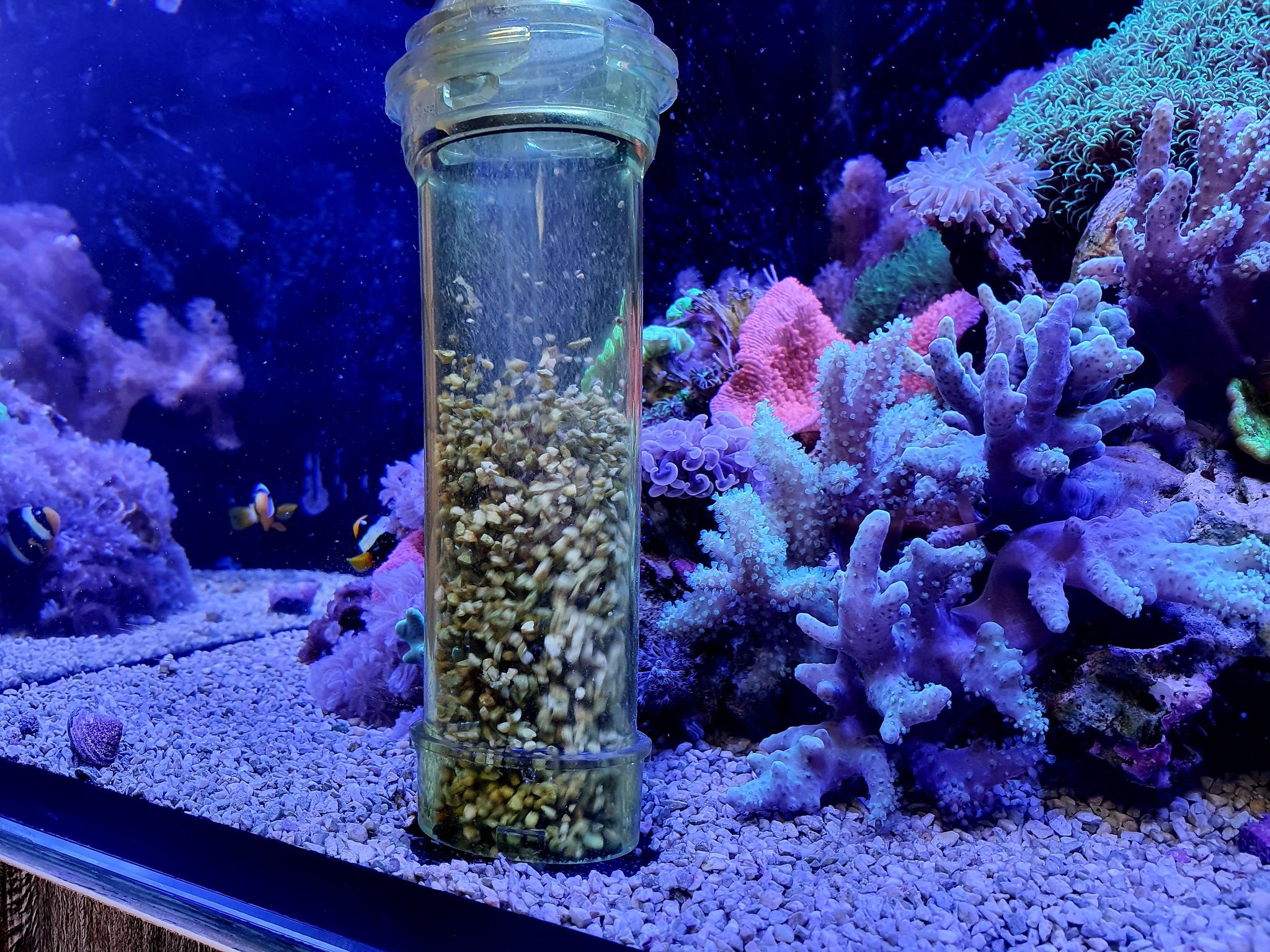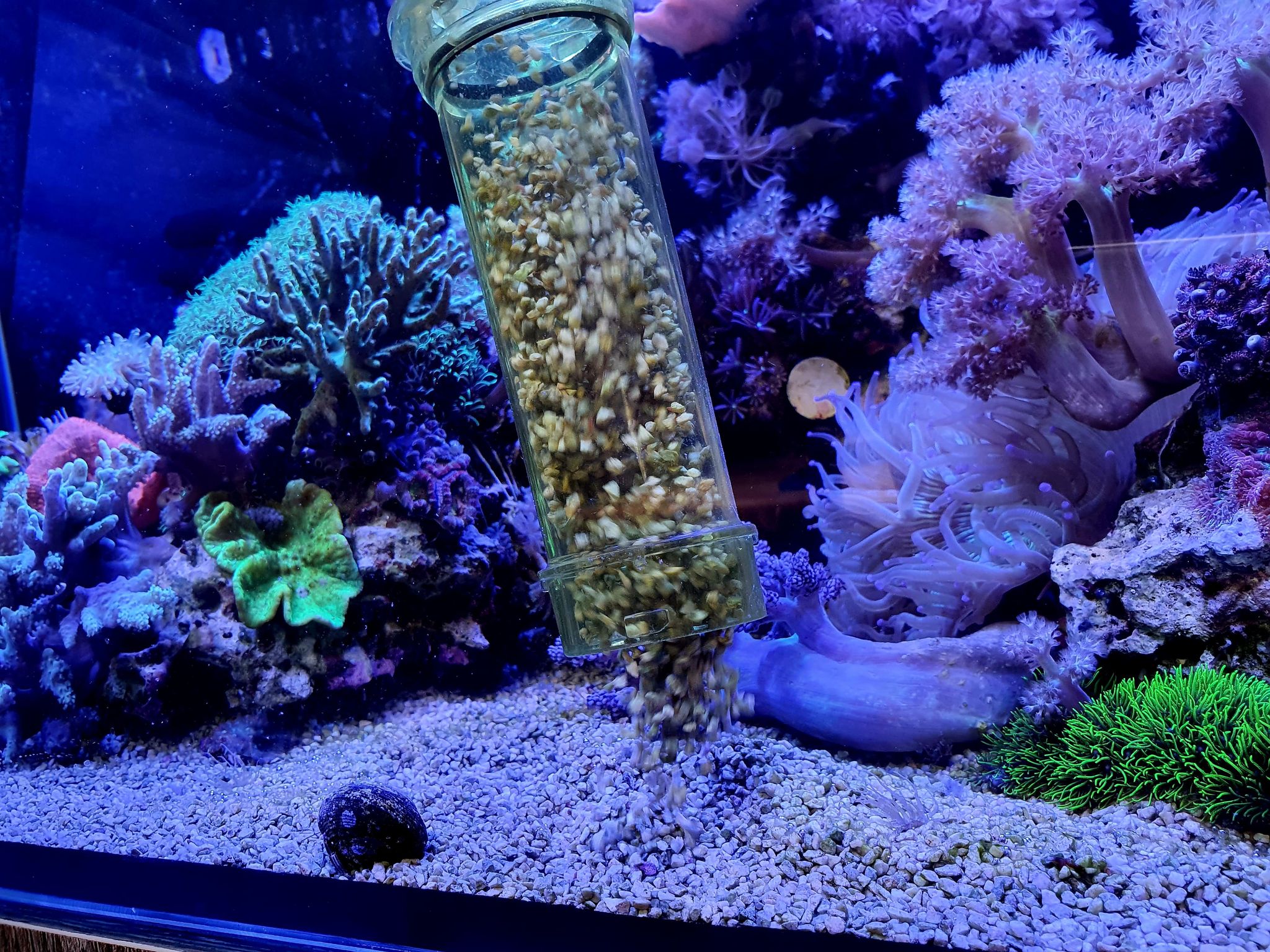Maybe it’s because we’re from the land that we are so obsessed with the substrates in our aquariums. Deep sand, shallow sand, live sand, Aragonite, sugar-sized fine, coarse, chips, coral gravel, or bare bottom – we’ve done them all, and reef substrate fashions tend to cycle. One of the popular substrate topics right now however is if you do have a sand substrate, do you use a gravel vacuum to clean it while doing a water change, or leave it? Here’s the case for:
Imagine coral sand in nature and we imagine it clean, white, and pristine. It shows off and compliments the corals above and in the past, it has been used both for its buffering capacity and its ability to harbor beneficial bacteria. Some wrasses dive into and sleep in sand substrates, while Valenciennea gobies sift it. Its environmental enrichment. Coral sand substrates can also harbor dirt, however, which if left can feed cyanobacteria films and nuisance algae. Use a gravel vacuum to remove the dirt from the gravel and you lower the nutrient levels in your tank. But will it remove the good stuff too? Those who have been in the hobby a long time will remember undergravel filters. They were heavily used in all fresh and saltwater aquaria in the ‘80’s and 90’s, where the gravel bed was the aquarium’s mechanical and biological filter combined. Air powered or later pump powered by powerheads like the Maxijet and Aquaclear the substrate provided a huge surface area for nitrifying bacteria to colonize and once mature they were very effective. Until they got too dirty.

Fast forward forty years and we’re still actually having the same conversation. Sandbeds can act as huge biological filters and in reef tanks, they can provide a home for a huge array of microfauna too, but they can also get too dirty. Strip a mature reef tank down and huge amounts of dirt will be revealed. Detritivores can do their bit but they can only convert so much waste and add it to themselves. The result is metallic-smelling silt and this and all the organic waste is why we recommend vacuuming the substrate. Will it remove some tiny critters? Yes, possibly, but not any more than a fish would and some will always find refuge away from the siphon. Will it remove beneficial bacteria? Not enough to damage beneficial biofilms on the grains (remember fluidized sand filters,) and there is a case that says that nitrifying bacteria at least can work better in a clean, oxygen-rich environment than they can in a dirty, silted-up one. Lack of maintenance spelled doom for undergravel filters and any other biological filter, so keep your reef tank clean and healthy, with less Cyanobacteria on the substrate, by siphoning sand beds and vacuuming on a regular basis.



